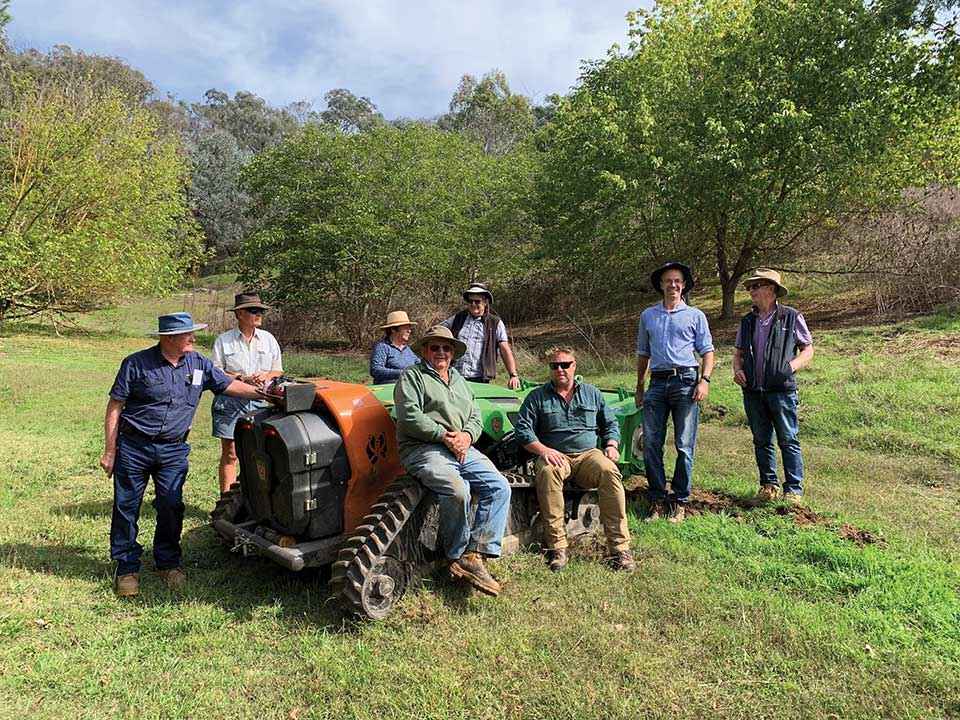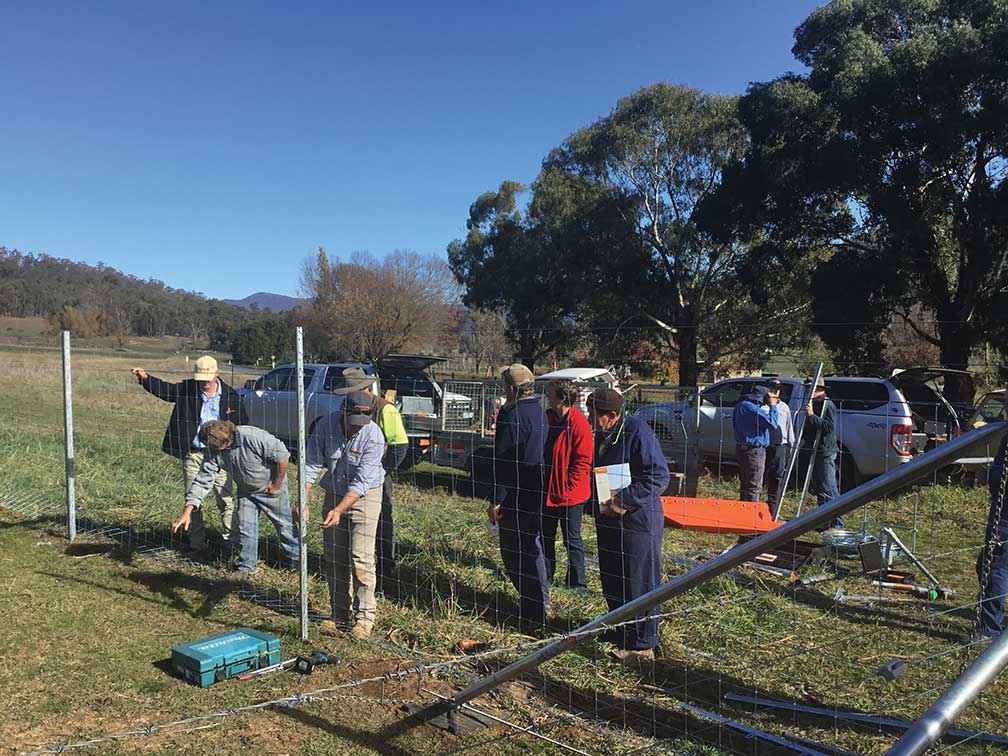Victorian Landcare Magazine - Winter 2021, Issue 81

The Upper Murray Landcare Network (UMLN) is located in Towong Shire in north east Victoria. The eight member groups are centred around the Cudgewa Creek Catchment, the Biggara/Bunroy area, along the Murray River at Tintaldra and in the upper catchment of the Koetong creek. The North East Blackberry Action Group (NEBAG) and the Upper Murray Catchment Farm Tree Group are members of UMLN and operate across the entire area.
In 2003, fire and drought in the region led UMLN to reflect on how to support landholders following natural disaster. It was clear that being well prepared would provide the best chance of delivering on-ground support to landholders and achieving the most effective land management outcomes.
The Community Recovery Committee set the goal of being better prepared for any exceptional circumstances by 2015. UMLN took this on board from a land management perspective and started to put in place processes to ensure land managers would be supported in a timely way so they could respond to natural events which impacted on their ability to manage their properties.
Consultation with community members on areas of concern saw weeds, and in particular blackberries, identified as a priority by land managers and the wider community. The North East Blackberry Action Group was formed, and an engagement process began where property managers were asked to agree to a visit and sign on to a three-year blackberry management plan. No one who was contacted refused a visit and it took two years for the initial visits to be completed.
A project officer was employed for six weeks a year to visit properties and offer follow up support annually. Herbicide wasn’t provided, however an incentive to establish access tracks on steep slopes to protect remnant vegetation was offered. The blackberry infestations were most severe on underutilised land on the difficult to access slopes which was often where remnant vegetation was threatened.

Above: Garth Short demonstrating chemical control using drones in hard to access sites.
While blackberry management was the initial reason for the engagement, most people became interested in taking an integrated approach to better management of their properties. The project manager referred landholders to UMLN and its member groups where they could then apply for funding to repair gullies, fence wetlands, and plant corridors and shelter belts.
More importantly, by asking people what they wanted to know, the attendance at field days and information sessions increased and new skills were learned.
This approach has now been in place for 15 years. More than 200 land managers have been involved and there has been a reduction in blackberry infestations from more than 5000 hectares to 800 hectares. The program is overseen by a strong and committed steering committee of Landcare representatives, public land managers and plantation owners.
While gains were made with weeds, pest animals continued to be an overwhelming problem. In 2015, the community identified deer as having a severe impact on water quality, vegetation, and pasture in the valleys of the Upper Murray.
A forum was convened to hear from speakers about the status of deer and management options. This was followed by a facilitated workshop to identify the main concerns and find out if anything was being done to assist private landholders to control deer and reduce impacts. Gaps in landholder knowledge about options were raised, along with the problems being caused by illegal hunting and antisocial behaviour such as shooting from roads near rural properties.
As a result of the workshop a Deer Management Folder for Private Landholders was published to provide information for people without the internet. A Rural Watch Program was also set up and signs were provided to rural communities.
Submissions were prepared for the Parliamentary Enquiry into Invasive Species Management and lobbying was done with local Members of Parliament. Our recommendation that the commercial harvesting of deer be made legal was adopted. This provides a royalty for deer harvested on private property for landholders.

Above: A field day on deer exclusion fencing held at Nariel Valley in June 2018.
The sustained efforts of the last 15 years to engage and develop relationships with land managers were tested when the worst-case scenario occurred in late December 2019. Devastating bushfires swept through the Upper Murray. The huge loss of livestock, homes and livelihoods impacted most residents and the surrounding land and water resources.
NEBAG and UMLN members who hadn’t been burnt out met three weeks after the fire to design an immediate recovery program via an Expression of Interest form for an onsite visit and assessment of land management works needed. This was distributed through many channels to be completed and returned when the landholders were ready.
Nine requests were received before the end of January 2020 and 131 property visits have been undertaken to the end of February 2021. All the assessments were costed and then we waited for grant opportunities to become available.
This didn’t occur until June 2020.
Funding was received in November 2020, too late for the planting season. Blackberry was prominent in assistance requests with burnt plants already 20 centimetres high just three weeks after the fire.
Essentially, we are starting again – repairing land and water assets and dealing with weeds we thought we had controlled years ago. The purple hills returned with a massive flowering of Paterson’s curse not seen for many years as the biocontrol agents had done their job well. Unfortunately, the seed bank was still in the soil and after the fires came through and the rain started, there was no holding it back.
We have learnt that preparedness gives an immediate advantage, and that relationships and trust mean a lot in a crisis. Although the blackberry program is about weed management it was the beginning of a 15-year collaboration with many partners about many different land management issues. When people reached out to Landcare, we were ready to respond. We will continue to do so thanks to our committed volunteer members, facilitators and land management professionals who generously share their time and skills.
Lyn Coulston is UMLN Secretary.
For more information email umlandcare@bigpond.com